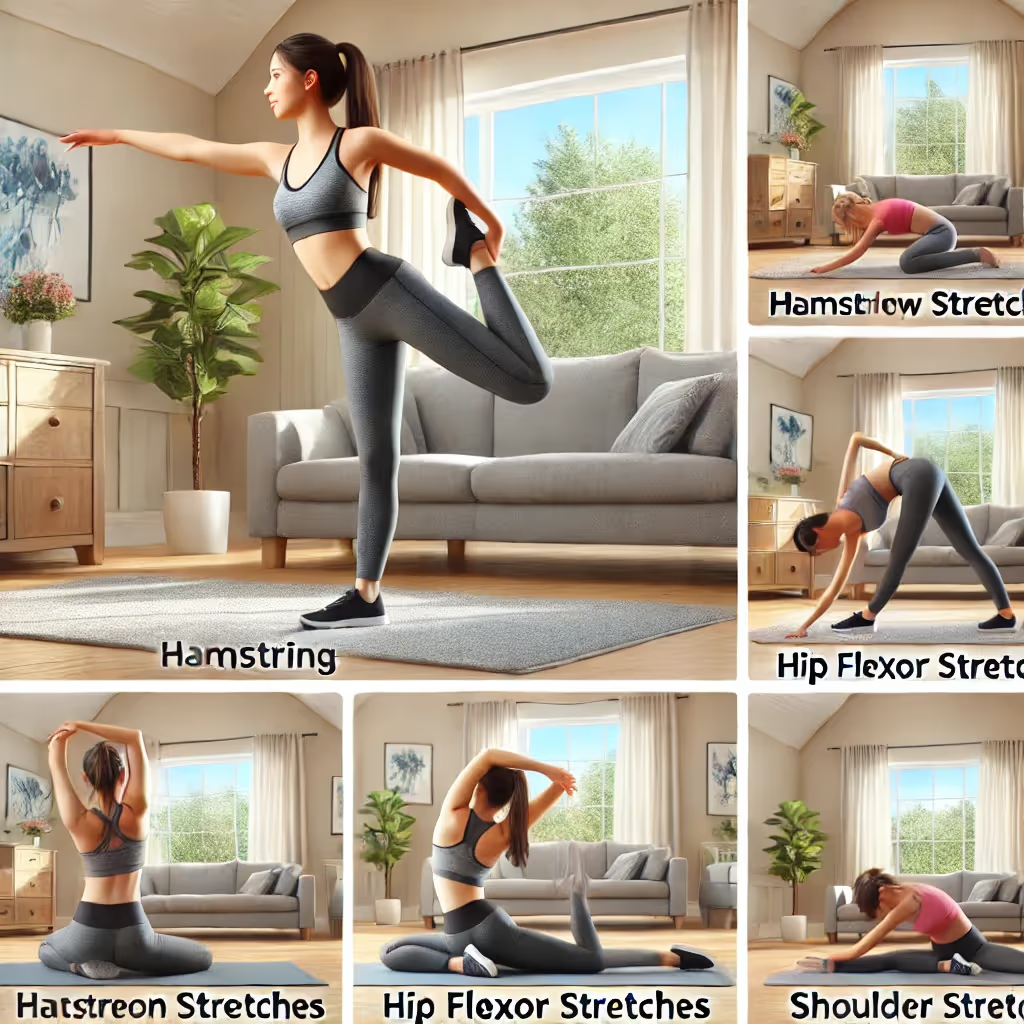Flexibility training is an often overlooked but crucial component of a well-rounded fitness routine. It enhances your body’s ability to move through a full range of motion, reduces the risk of injury, and improves overall performance in both daily activities and physical exercises. In this blog post, we’ll explore the benefits of flexibility training, the best practices to incorporate it into your routine, and how the HipTrain app can support your flexibility goals.
Key Benefits of Flexibility Training
- Improves Range of Motion
Regular flexibility exercises help to lengthen muscles and increase joint mobility, allowing you to move more freely and perform exercises with proper form. This is essential for both athletic performance and everyday activities. - Reduces Risk of Injury
Flexible muscles and joints are less prone to strains and sprains. By improving flexibility, you can decrease the likelihood of injuries during workouts and daily tasks. - Enhances Posture
Tight muscles can lead to poor posture and imbalances in the body. Flexibility training helps to correct these imbalances, promoting better posture and alignment. - Relieves Muscle Tension and Soreness
Stretching exercises can alleviate muscle tension and reduce post-exercise soreness. This can aid in faster recovery and keep you feeling comfortable and pain-free. - Boosts Circulation
Flexibility exercises increase blood flow to the muscles, which can enhance nutrient delivery and waste removal. This supports overall muscle health and function. - Enhances Mental Relaxation
Flexibility training, particularly when combined with deep breathing techniques, can help to reduce stress and promote relaxation. This is beneficial for both mental and physical well-being.
Effective Flexibility Training Exercises
Here are some effective exercises to improve flexibility and mobility:
- Hamstring Stretch
- How to Perform: Sit on the floor with one leg extended and the other bent, with the sole of your foot against the inner thigh. Reach forward towards your toes, keeping your back straight. Hold for 20-30 seconds, then switch legs.
- Benefits: Stretches the hamstrings, lower back, and calves.
- Cat-Cow Stretch
- How to Perform: Start on your hands and knees in a tabletop position. Inhale, arch your back (cow pose), then exhale and round your spine (cat pose). Repeat for 10-15 breaths.
- Benefits: Improves flexibility in the spine, neck, and shoulders.
- Hip Flexor Stretch
- How to Perform: Kneel on one knee with the other foot in front, forming a 90-degree angle. Push your hips forward gently, feeling a stretch in the front of the hip. Hold for 20-30 seconds, then switch sides.
- Benefits: Stretches the hip flexors and quadriceps.
- Shoulder Stretch
- How to Perform: Bring one arm across your chest and use the opposite hand to gently pull it closer. Hold for 20-30 seconds, then switch arms.
- Benefits: Stretches the shoulders and upper back.
- Child’s Pose
- How to Perform: Kneel on the floor, sit back on your heels, and extend your arms forward, lowering your torso to the ground. Hold for 20-30 seconds.
- Benefits: Stretches the back, hips, and shoulders, and promotes relaxation.
Tips for Effective Flexibility Training
- Warm Up First
Always warm up your muscles before stretching. This can be done with light aerobic exercises such as walking or jogging for 5-10 minutes. - Stretch Regularly
Consistency is key. Aim to include flexibility exercises in your routine at least 3-4 times a week for optimal results. - Hold Stretches
Hold each stretch for at least 20-30 seconds to allow the muscles to lengthen and relax fully. Avoid bouncing or forcing the stretch. - Breathe Deeply
Focus on deep, steady breathing while stretching. This helps to relax your muscles and enhances the effectiveness of the stretch. - Use the HipTrain App
The HipTrain app offers guided flexibility routines and personalized plans to help you improve your flexibility effectively. It provides video demonstrations and real-time feedback to ensure you perform each stretch correctly.
Conclusion
Flexibility training is a vital aspect of overall fitness, contributing to improved range of motion, reduced injury risk, better posture, and enhanced mental relaxation. By incorporating effective stretching exercises into your routine and staying consistent, you can enjoy these benefits and enhance your physical performance. For personalized flexibility routines and expert guidance, consider using the HipTrain app.
For more tips and information on home fitness, visit HipTrain and start incorporating flexibility training into your workouts today.

